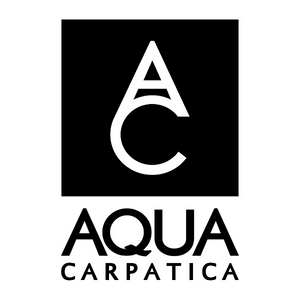‘Yeasts consume oxygen more effectively than sulphur dioxide’
Could inactivated dry yeasts reduce the need for SO2?
Inactivated dry yeasts (IDY) “have the same effect as lees, but without any of the drawbacks”. That’s one of the conclusions of a new study from Spain. The paper, published in full here, outlines the benefits of lees ageing for white wines:
- Due to the phenomenon of autolysis, the presence of lees enriches the wine with many compounds that improve its quality.
- When released into the wine, these components of yeast membranes and cytoplasm, such as polysaccharides, mannoproteins, peptides, proteins, amino acids, lipids, and nucleotides, transform its composition and improve some of its sensory attributes. Polysaccharides and mannoproteins improve mouthfeel and, in combination with some peptides and proteins, contribute to wine sweetness, smoothing the perception of acidity and astringency. Some amino acids, peptides and nucleotides can contribute to creating an umami taste and have been described as flavour enhancers, while lipids and amino acids have been described as aroma precursors. Additionally, mannoproteins seem to exert a protective colloid effect, increasing the stability of proteins and tartaric acid salts.
- Lees has also been reported to consume oxygen, slowing down the oxidation of the wine. This could be due to the oxidation of membrane lipids and/or the release of glutathione by yeast. The paper, published in OENO One (Vol. 55 No. 2, 2021), states: “Whatever the mechanism, oxygen consumption by lees appears to be the main factor involved in white wines aged on lees being able to age for longer than other white wines.”
For this reason, IDY are now used, because in theory they have the same effect as lees, but without any of the drawbacks. But, according to the latest research, they may have another benefit: consuming oxygen in a similar way to other common antioxidants used in wine, such as sulphur dioxide. This study set out to measure the oxygen consumption rate of some inactivated dry yeasts and compare them with the effectiveness of other common wine antioxidants (sulphur dioxide, ascorbic acid and glutathione) in order to determine their real antioxidant capacity for protecting wine from the detrimental effects of oxygen.
Using a model wine solution, they found that some IDYs may be more effective than sulphur dioxide at protecting wine against oxidation by actually consuming oxygen. Not as much as ascorbic acid – which, on its own, can generate hydrogen peroxide after consuming oxygen – but more than sulphur dioxide and glutathione.
The most effective IDY in the experiment was Lallemand’s experimental Antiox-1, followed by Lallemand’s Pure-Lees. Both of these release glutathione – much lower in concentration than the maximal authorised dose of pure glutathione and not enough to account for all the oxygen consumption.
'Ascorbic acid consumed oxygen much faster than the other antioxidants'The paper concludes: “This work showed that nearly all the studied antioxidants directly consume oxygen in a model wine solution. Ascorbic acid consumed oxygen much faster than the other antioxidants, followed in decreasing order by IDY-3 (Antiox-1), glutathione, IDY-1 (Pure-Lees) and sulphur dioxide at the usual doses. Ascorbic acid also showed the highest total oxygen consumption capacity, followed in decreasing order by IDY-3, IDY-1, sulphur dioxide and glutathione.
“Furthermore, these results confirm that some inactivated dry yeasts are more effective than sulphur dioxide at directly consuming oxygen; they could therefore be a very useful tool for protecting wine against oxidation. However, the direct oxygen consumption by IDYs cannot be justified by their content in glutathione since the corresponding stoichiometric consumption is much lower than their real oxygen consumption capacity. Further research is needed to investigate the mechanisms by which some inactivated dry yeasts consume oxygen, and to determine whether they can be used to reduce the dose of sulphur dioxide while still preventing spoilage due to oxidation.”
Do non-Saccharomyces yeasts add to a wine’s complexity?
A study in Serbia has confirmed what many winemakers suspect – that the presence of non-Saccharomyces yeasts in the initial stage of fermentation with later inoculation with Saccharomyces cerevisiae contributes to increased complexity of the wine.The researchers (Ivana Karabegović, Marko Malićanin, Bojana Danilović, Jelena Stanojević, Sandra Stamenković Stojanović, Nada Nikolić, and Miodrag Lazić) examined the potential of two commercial non-Saccharomyces yeast, Metschnikowia pulcherrima (Flavia MP346, Lallemand) and Torulaspora delbrueckii (Biodiva TD291, Lallemand) for improving the aroma and sensory profile of the regional red grape variety Prokupac, commonly used to produce dark rosés and in blends with Syrah, Cabernet Sauvignon and Pinot Noir, but increasingly used for varietal red wines.
They used these yeasts on their own and in sequential fermentations with Saccharomyces cerevisiae (ICV D254, Lallemand) after 3 degrees of °Brix reduction. The results indicate that the application of both non-Saccharomyces yeast (in pure or in sequential fermentation) significantly reduces the content of alcohol when compared to the control. The use of M. pulcherrima in both pure and sequential fermentation resulted in a higher content of different groups of polyphenols, anthocyanins and flavonoids or better colour characteristics compared to the wines obtained in fermentations with T. delbrueckii.
The study shows the presence of non-Saccharomyces yeasts in the initial stage of fermentation with later inoculation with Saccharomyces cerevisiae contributes to increased complexity of the wine, as well as increased higher alcohol content and total extracts. Wines produced from sequential fermentation with T. delbrueckii showed floral and spice attributes, probably due to 1-pentanol and 2-phenylethanol detected in the wine, as well as to the large amount of ethyl acetate. The use of M. pulcherrima in pure fermentation resulted in wines with the lowest sensorial characteristics (ie. lacking fruity and floral aroma), probably due to the lowest relative contribution of ethyl esters. The control wine in this study – from pure fermentation with Saccharomyces cerevisiae – had the most intense ‘red berries’ and ‘black berries’ note and low intensity of spices or vegetable aroma, which may be explained by the highest relative contribution of ethyl octanoate and ethyl decanoate.
They also found the aromatic profile of Prokupac wines produced in sequential fermentation was more complex compared to the wines produced in pure fermentation.
'A particular advantage of wines made using non-Saccharomyces was the improvement in colour intensity'The paper, published in Oeno One (Vol. 55 No. 2, 2021), concluded: “Saccharomyces cerevisiae is well-known for its high fermentative performance, which is why it has been irreplaceable for years. However, the presence of non-Saccharomyces yeasts in the initial stage of fermentation, along with later inoculation with S. cerevisiae, contributes to a greater production of secondary metabolites, thus increasing the complexity of the wine and influencing the sensory experience. T. delbrueckii and M. pulcherrima, which were used in our study, were found to influence the increase in number of identified volatile compounds, higher alcohols and total extracts in the wines. A particular advantage of wines made using non-Saccharomyces was the improvement in colour intensity, which is important if the grape usually produces wines with lower colour intensity. As the composition of the fermented must remained the same, the differences found in the wine composition can be attributed to the added yeast strain.
“In particular, the wines produced from the pure fermentation with T. delbrueckii had higher relative contribution of ethyl acetate, isobutyl alcohol and 3-methyl-bytil-acetate, while that resulting from the pure fermentation with M. pulcherrima had more 3-methyl-1-butanol, n-hexanol and isohexanol. Sequential fermentation wines contained higher levels of 1-pentanol, methyl-1-butanol and 2-phenylethanol, which all positively influence flavour and aroma. Control wine samples had a high relative abundance of ethyl ethers, which contribute to fruity pleasant odours. Since basic oenological parameters and the aromatic composition of wine contribute the most to the wine sensory experience, the fact that non-Saccharomyces yeast has potential for improving them – as established in our study – could prove valuable in the development of modern viticulture practices.”
Can non-Saccharomyces yeasts also help in the vineyard?
When non-Saccharomyces yeast Starmerella bacillaris (aka Candida zemplinina) is used in fermentations with Saccharomyces cerevisiae, it can improve the wine due to its high glycerol and moderate volatile acidity production. But Italian researchers Chiara Nadai, Alessio Giacomini and Viviana Corich have also shown it has the potential to fight grey mould caused by Botrytis cinerea.This means it could be used to spray grapes pre-harvest – and to kickstart the fermentation with positive results.
The researchers used S. bacillaris FRI751 isolated from dried Raboso Piave grapes on healthy and undamaged bunches of Manzoni bianco, and S. cerevisiae EC1118 (Lallemand) in the control and sequential fermentation.
The study, available here, concluded: “Our results indicate that this yeast is a good candidate for being tested as a biocontrol agent close to time of harvest, when synthetic fungicide treatment must be stopped to respect the pre-harvest interval for limiting fungicide residues. At a concentration conducive to antifungal activity, S. bacillaris positively influences the fermentation process by producing high concentrations of glycerol. Interestingly, this effect on wine was also observed when the inoculum concentration was 10 times higher or lower than the reference concentration.”
What happens if you blast Saccharomyces cerevisiae in a microwave and add it to a liqueur de tirage?
Researchers in Australia have used a microwave, ultrasound and the addition of β-glucanase enzymes to change the size and structure of cells in a commercial yeast used for sparkling winemaking, Saccharomyces cerevisiae IOC 18-2007, before adding it to the tirage solution for the secondary fermentation in some Tasmanian méthode traditionelle. Some of the changes – like the change to a ‘doughnut’-shaped cell – were similar to those observed on older lees from the control wine.The researchers say: “Microwave, ultrasound or β-glucanase enzymes are tools that could potentially initiate the release of yeast cell compounds into wine.”
The study, published here, concluded: “The addition of yeast treatments, that have the potential for earlier release of cellular components, to the tirage solution could reduce the time required on lees to achieve the characteristics of mature sparkling wine. This study demonstrated that treatment of yeast with microwave, ultrasound or β-glucanase enzymes, prior to addition to a liqueur de tirage, caused morphological disruptions that were associated with differences in yeast permeability. This disruption was indicated by propidium iodide permeable yeast cell membranes. Modifications to cell structure from the microwave treatment produced unique ‘doughnut’-shaped features and a range of morphological effects to yeast at time of addition (tirage or time 0) that were similar to older lees from the control after 6, 12 and 18 months’ ageing. These results indicate that microwave, ultrasound or β-glucanase enzymes are tools that could potentially initiate the release of yeast cell compounds into wine, and further investigation is warranted into the impact of such treatments on the flavour and aroma profiles of the wines through sensory evaluation.”
'Microwave, ultrasound or β-glucanase enzymes are tools that could potentially initiate the release of yeast cell compounds into wine'

 English
English French
French



.png)


.png)





